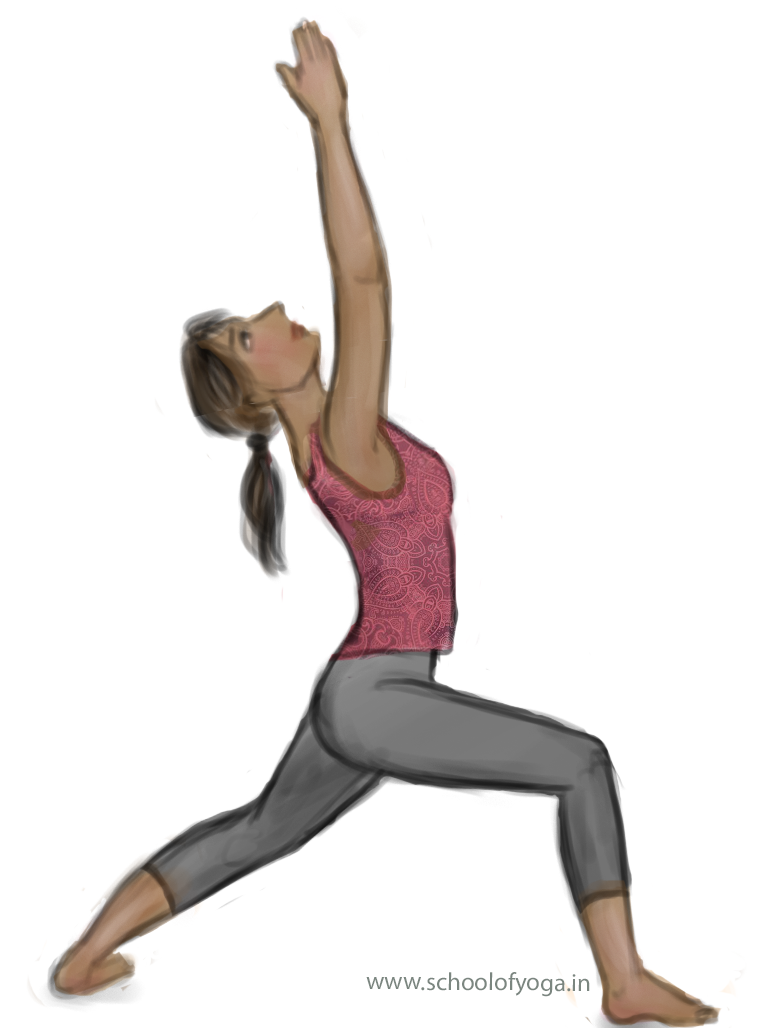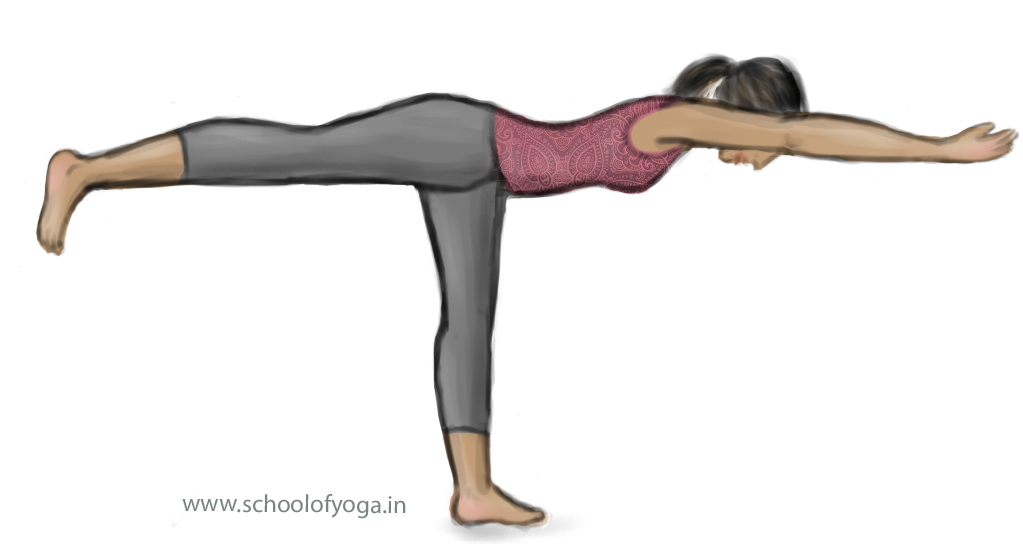School of Yoga explains veerabhadrasana (gracious warrior pose)

Veerabhadrasana technique:
- Sthithi (starting) position: Stand with your feet comfortably apart, slightly more than 1 meter or 3 feet. Keep hands at the side.
- Turn one foot at the heel, outward. Keep other foot steady.
- Slowly fold knee of the leg where feet are turned outward. Sink the pelvis till the leg form approximately 90 degrees at the knee.
- Keep other leg stretched and straight.
- Take hands above the head and join them in anjali mudra.
- With the hands in anjali mudra, bend the torso forward in the direction of the bent knee until face touches the bent knee.
- Breathe in.
- Breathing out, sink pelvis towards the ground.
- Breathing out, take the hands up and arch the back in the opposite direction as far as possible slowly without losing balance.
- The drishti or focus to be maintained is angushtamadhye drishti (gazing into the nail in the thumb).
- Maintain position for 10 counts.
- Breathing in, straighten the legs and come to upright position.
- Straighten feet parallel to each other.
- Bring hand back to the sides.
- Bring feet together. Relax.
- Repeat on the other side.
Veerabhadrasana variations:

- Stand with feet comfortably apart, slightly more than 1 meter or 3 feet. Keep hands on the side
- Turn one foot at the heel, outward. Keep other foot stretched and steady.
- Take your hands above the head and join them in anjali mudra.
- Turn torso to the side of the foot that is turned outward.
- Bend torso at the waist with the hands in anjali mudra, till torso is parallel to the ground.
- Breathe in.
- Breathing out, balance your body on the outward turned feet and slowly lift the other feet in the opposite direction as far as you can manage. Hold body still.
- Hold for 10 counts, maintain shallow breathing.
- The drishti (focus) to be maintained is oordhva drishti (gaze into space or the floor).
- Bring the leg back to the ground. Breathe in.
- Straighten the torso to upright position. Let the hands fall back to the sides.
- Bring feet to straight ahead position. Relax.
- Repeat on the other side.
Veerabhadrasana benefits:
- The act of sinking into the ground strengthens the sartorius muscles. The sartorius muscle is a long muscle which covers and acts upon both the hip and knee joints. At the hip joint, the sartorius, along with other major hip muscles, helps in flexing, holding and lateral movement of the thigh. At the knee joint the sartorius helps to flex the leg sideways. This muscle is almost never exercised consciously, but veerabhadrasana brings health to this muscle.
- This asana stretches all the muscles of the hip, back (especially the internal abdominal oblique and iliosoas muscles), knee, calf and ankle.
- The upper body stretching strengthens the thoracic and cervical muscles, especially the trapezius and latissimus dorsi muscle.
- This asana assists in improving the functioning of all organs in the lower abdomen; the digestive, reproductive and urinary tract organs.
- The stretching of the lower back strengthens the lower back muscles and increases blood supply to the sympathetic and parasympathetic nerves.
Veerabhadrasana contraindications :
- People with back problems and circulatory disorders should not attempt this asana without first consulting a physician.
- Practitioners with ear problems should not attempt this asana without first consulting a physician.
- People with arthritis problems must perform this asana only under supervision of a physician.
- Do not perform this asana during menstruation or pregnancy.
Some noteworthy points of veerabhadrasana :
Internal Links: Dharma (conditioning), Stress and Situational Awareness, Prana, Asana overview 1, Asana Overview 2, Asana Focus or gazing, Pranayama
External Links: Prana, Chakra, Pancha Tattva, Pancha Prana, Pancha Kosha, Nadi, thesatoriconcept.com